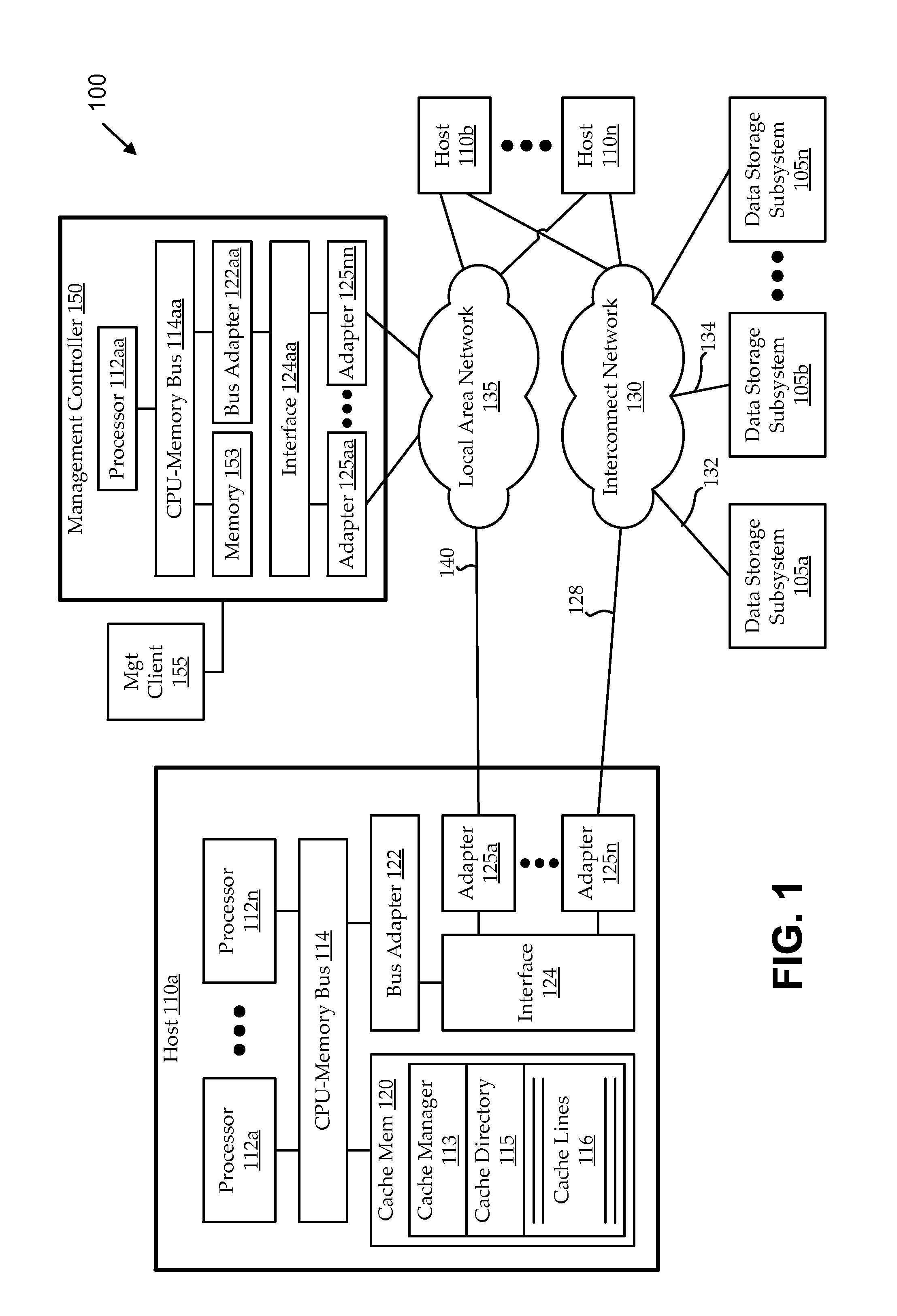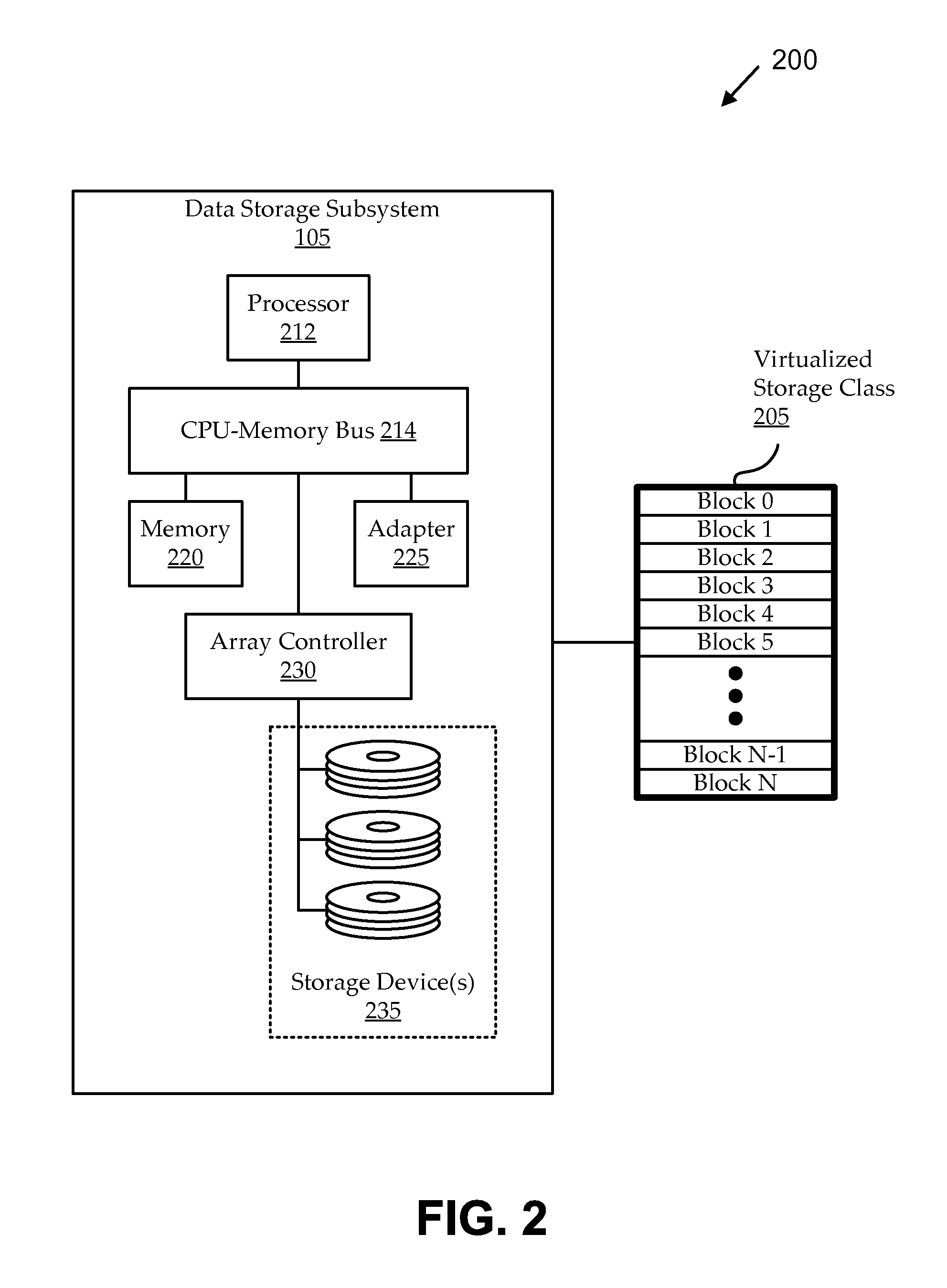Sub-lun auto-tiering
a file system and sub-lun technology, applied in the field of data storage environments, can solve the problems of access speed, reliability, and cost of each type, and achieve the effect of maximizing the resource options availabl
- Summary
- Abstract
- Description
- Claims
- Application Information
AI Technical Summary
Benefits of technology
Problems solved by technology
Method used
Image
Examples
Embodiment Construction
[0021]In the following description, numerous specific details are set forth to provide a thorough understanding of the present invention. However, one having ordinary skill in the art should recognize that the invention may be practiced without these specific details. In some instances, circuits, structures, and techniques have not been shown in detail to avoid obscuring the present invention.
[0022]Embodiments operate in storage systems having multiple storage classes configured or being used to store multiple file systems. As used herein, “file systems” intend generally to refer to any similar type of file storage environment, including, for example, traditional file systems (e.g., with files arranged in directories), storage area network logical unit numbers (SAN LUNs), etc.). A storage system provides a resource pool that can be allocated and managed at different levels. Each storage class in the storage system can have one or more storage devices (logical storage units identifie...
PUM
 Login to View More
Login to View More Abstract
Description
Claims
Application Information
 Login to View More
Login to View More - R&D
- Intellectual Property
- Life Sciences
- Materials
- Tech Scout
- Unparalleled Data Quality
- Higher Quality Content
- 60% Fewer Hallucinations
Browse by: Latest US Patents, China's latest patents, Technical Efficacy Thesaurus, Application Domain, Technology Topic, Popular Technical Reports.
© 2025 PatSnap. All rights reserved.Legal|Privacy policy|Modern Slavery Act Transparency Statement|Sitemap|About US| Contact US: help@patsnap.com



